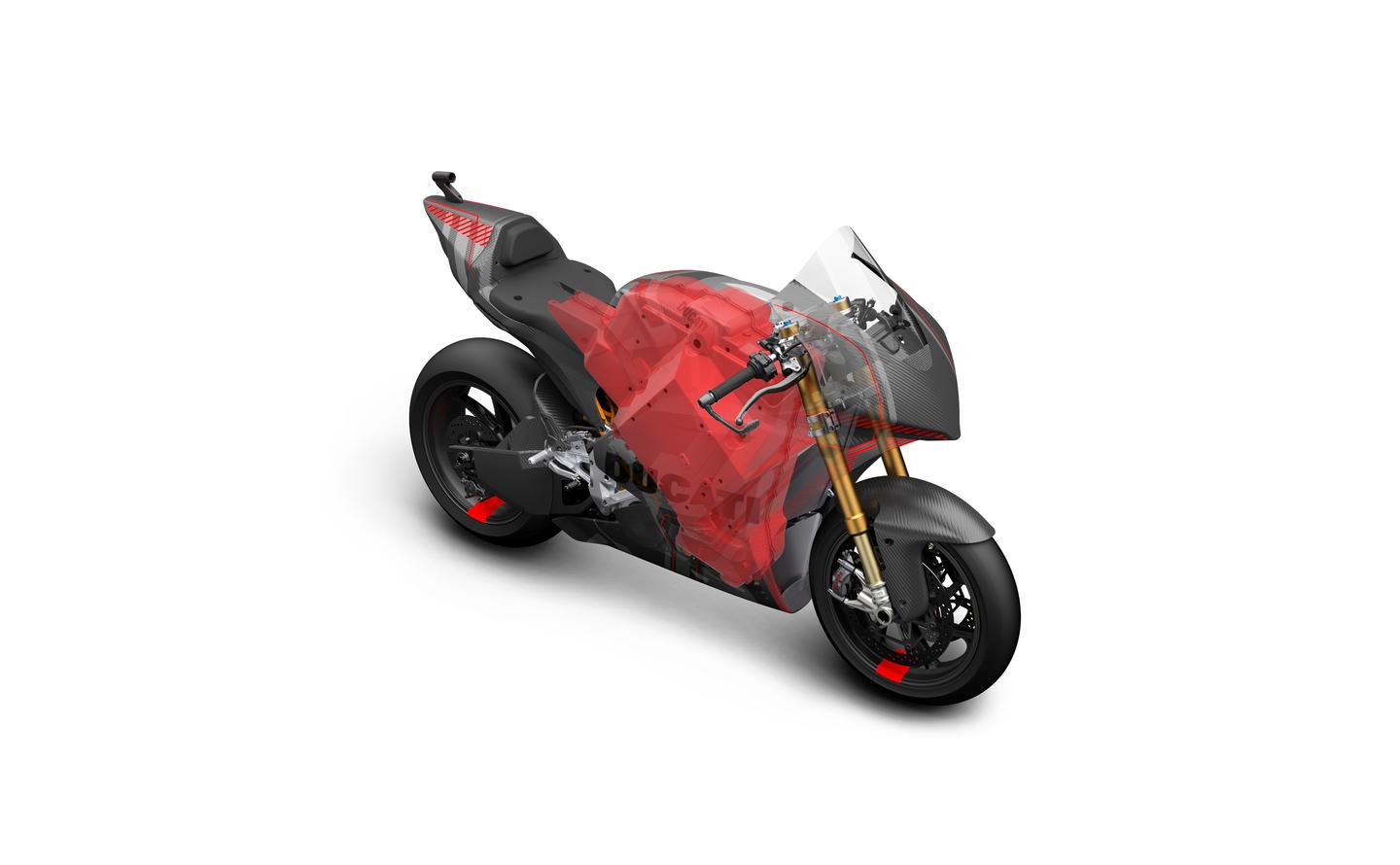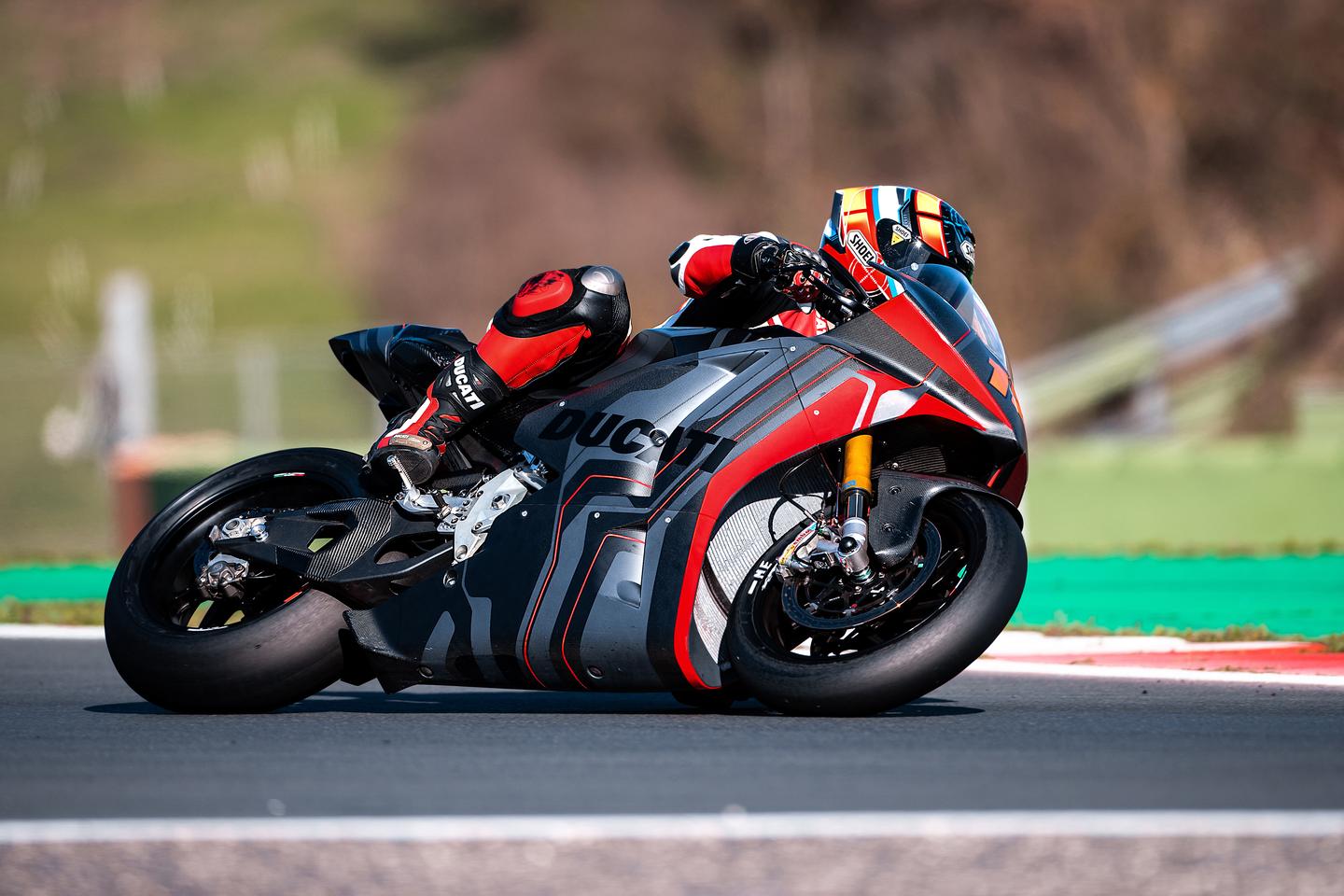Ducati will take over as the sole motorcycle supplier for the FIM MotoE World Cup from 2023, using the opportunity to build a cracking electric sportsbike that’ll inform the brand’s electrification in the coming years.
The V12L prototype has been out testing on track since December – it’s hard to overstate what a massive upheaval this program is for a company like Ducati, which has been so synonymous with combustion engine technology. But what an opportunity it represents, to create battery-electric performance bikes and forge them in the crucible of racing while other major manufacturers sit on their hands and wait for batteries to get good.
Here’s what’s under the skin. The biggest challenge for any electric sportsbike is energy storage; how to package the sheer bulk of a big battery pack and integrate it with the bike in a way that supports the handling parameters of a top-flight track bike that racers will actually want to get on and ride.
The V21L’s battery pack incorporates some 1,152 cylindrical 21700 cells, holds around 18 kWh, runs at a system voltage of 800 V, and weighs an enormous 110 kg (243 lb). That’s 1.3 times the weight of an entire Moto3 bike, just in the battery. But it’s not just a big box; Ducati has created a shape that fits the aerodynamics and ergonomics of a racer, rather than forcing the rest of the bike to work around the battery.

Ducati
Using the carbon fiber battery pack case as a stressed part of the chassis, the V21L has a total weight of 225 kg (496 lb) – a significant drop from the 262 kg (578 lb) that Energica’s MotoE bikes have carried over the last few years, even if the Ducati does take some 2 kWh less battery on board.
Peak power is currently 110 kW (148 hp), and peak torque is 140 Nm (103 lb-ft), with liquid cooling of both the battery and motor to ensure it can run hard for the length of a race. The team has clocked a top speed of 275 km/h (171 mph) at Mugello – one of the fastest tracks on the MotoGP circuit. There’s still plenty of development to go at this stage, but it’s a ways off the MotoGP bike speed record at Mugello, which Ducati also holds after Jorge Martin was clocked at 364 km/h (226.2 mph) back in May.
Ohlins suspension graces both ends, with a TTX36 shock and NPX 25/30 pressurized forks. Brembo is in charge of stopping the bike, and since the bike is clutchless and single-speed, there’s space on the left handlebar for an optional rear brake lever if riders can re-configure their brain away from using the left boot. Electronic rider aids include traction control, slide control, wheelie control and switchable mapping for both engine power delivery and regenerative braking.

Ducati
“For Ducati, having the opportunity to become suppliers of the FIM MotoE World Cup is not only a technologically exciting venture, but also the best way to interpret the challenges of the new millennium,” said Vincenzo De Silvio, Ducati R&D Director, in a press release. “Racing competition represents the ideal terrain on which to develop innovative technologies that will then transfer to production motorcycles. At this moment, the most important challenges in this field remain those related to the size, weight, autonomy of the batteries and the availability of the charging networks. Ducati’s experience in the FIM MotoE World Cup will be a fundamental support for product R&D, together with the physiological evolution of technology and chemistry. Helping the company’s internal expertise to grow is already essential today to be ready when the time comes to put the first street electric Ducati into production.”
Check out a video below.
Ducati MotoE | Tech Talk
Source: Ducati
Source of Article